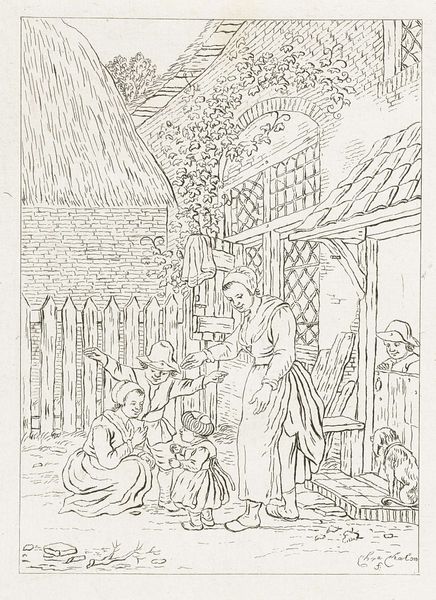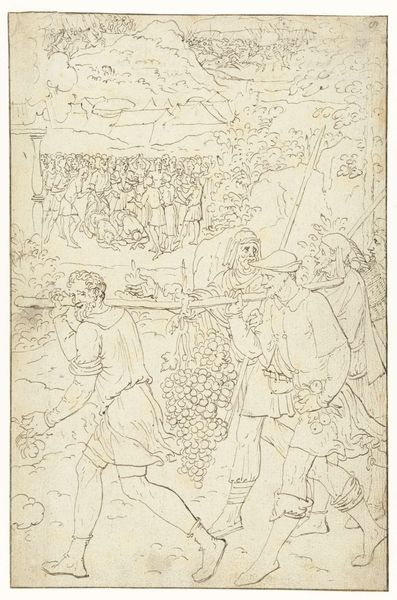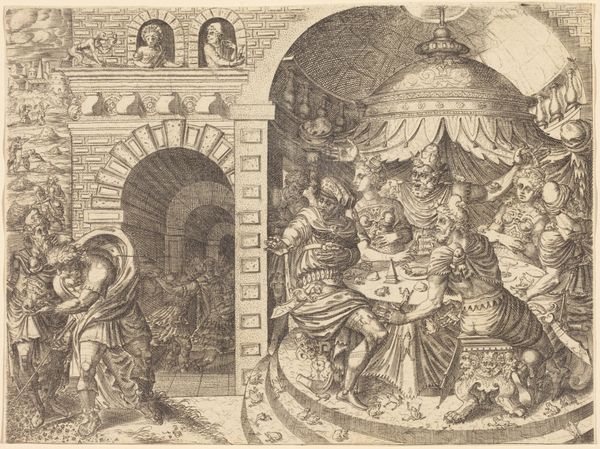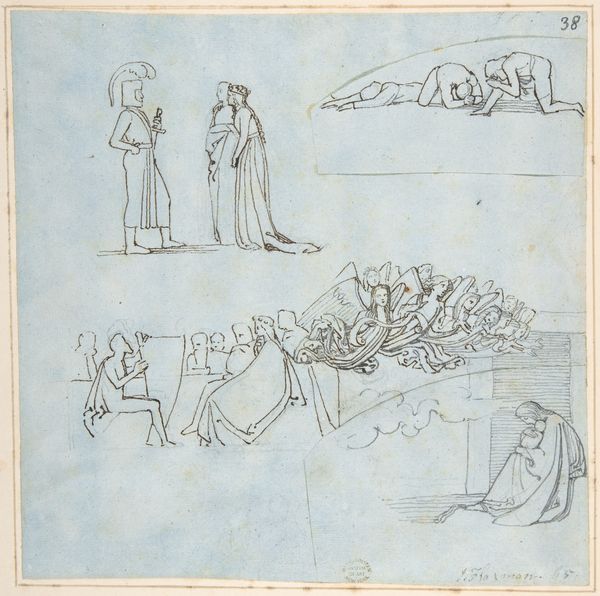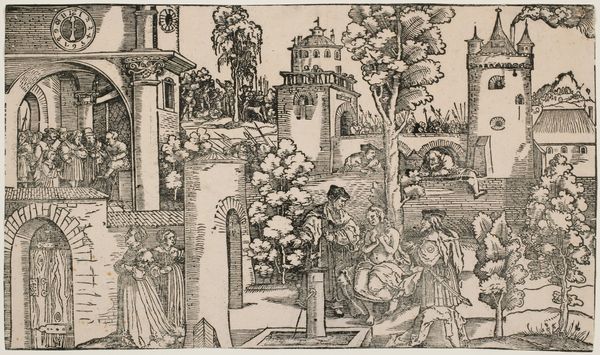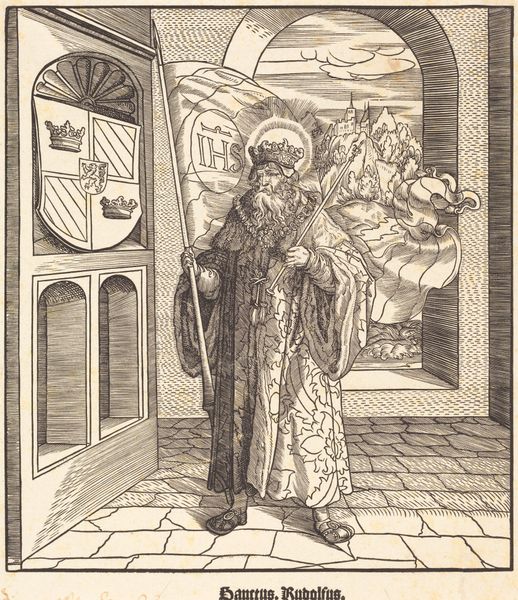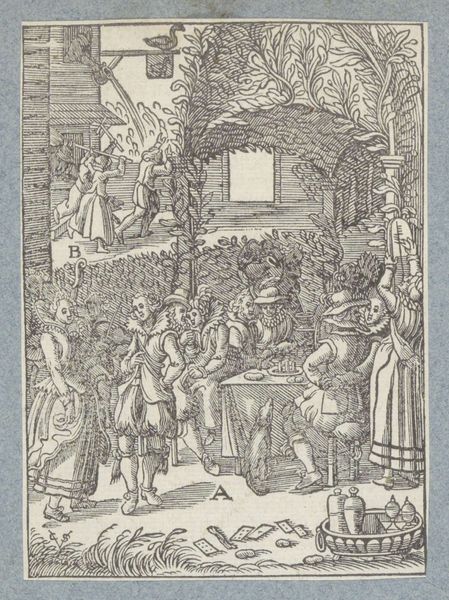
painting, paper, ink
#
portrait
#
narrative-art
#
painting
#
figuration
#
paper
#
ink
#
orientalism
#
islamic-art
#
genre-painting
#
miniature
Copyright: Hossein Behzad,Fair Use
Curator: The visual language here feels so immediately captivating. Editor: Indeed. Let's orient our listeners. We're looking at a painting attributed to Hossein Behzad entitled “Khosrow Parviz and passengers.” The medium involves ink and painting on paper, showcasing Behzad’s deft handling of the miniature format, common in Persian and Islamic art traditions. Curator: The scene presents almost a dreamlike, paradisiacal vision, doesn’t it? All those vibrant blues and greens – a world contained and idealized. The symbolic weight of this composition intrigues me. Editor: The political symbolism is hard to miss, even with such limited details on the exact historical context around its production and initial reception. Khosrow Parviz, an important Sasanian king of Persia, is prominently placed beneath a richly decorated canopy. I see this work fitting into broader artistic trends depicting royal power and narratives during a specific era. Curator: Absolutely. Royal imagery serves to reinforce specific social structures and their attending iconography. Beyond its function, there's also this sense of serenity communicated through carefully balanced colors and geometric forms, perhaps alluding to an internal landscape as well as visible power. Editor: True. But I'm always conscious that these supposedly serene images functioned within political machinery often characterized by less than serene conditions! Think of how this image might have played out as a propaganda tool for royalist audiences. The controlled palette and composition work precisely to elicit favorable sentiments toward Khosrow Parviz. Curator: Yet there is an undeniable aesthetic commitment that persists regardless of the original intention. What do you make of the horse depicted here? Do you see an evocation of ancient mythologies in that animal? Or is that simply because the horse represents status here? Editor: It’s definitely doing symbolic work to project idealized masculine attributes, that’s very clear in the overall narrative presentation. The way it carries him suggests dominion, perhaps an important visual symbol. But looking at Behzad's work more broadly might show consistent thematic usage, tying the animal to a deeper, personal symbolism for the artist beyond mere visual codes of power. Curator: So interesting to think how the role of artists is linked to political project to the production of national, symbolic visual systems. Editor: Agreed, and thank you for providing that iconographic lens, it's been enriching to explore both perspectives on “Khosrow Parviz and passengers."
Comments
No comments
Be the first to comment and join the conversation on the ultimate creative platform.
